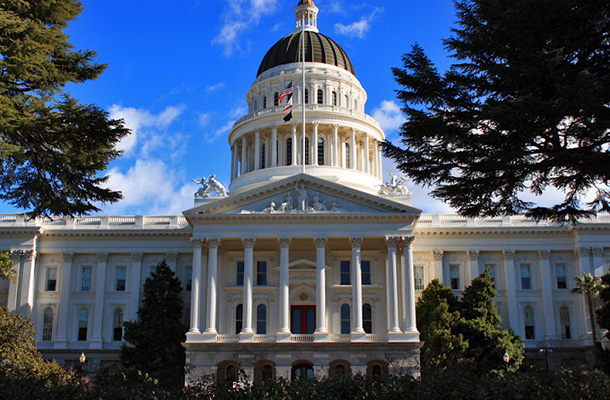
(Photo Credit: Christopher Padalinski/Flickr)
The news last week that the California Legislature’s approval rating has hit 50 percent is a reminder of how things have changed in California. It wasn’t that long ago that the Legislature approval rate was 10 percent, or as one observer wryly noted at the time, “only their families seem to like what they’re doing.”
In case you're wondering if 50 percent is good among large complex states, a similar survey in New York found only 25 percent of the respondents approved the work the Empire State legislature is doing.
As California Forward prepares to celebrate its 10th anniversary early next year, we are reflecting on both the work we have done to help drive governmental reforms and, as always, looking forward to working on solutions to current challenges.
“In 2007, Californians considered government to be broken,” remembers Lenny Mendonca, a Bay Area business leader and co-chair of CA Fwd’s Leadership Council. “The Legislature was poorly thought of for good reason – hyper-partisanship had paralyzed the Assembly and the Senate.”
A number of large foundations supported the launch of CA Fwd because they concluded that governance reforms were essential to programs intended to improve public outcomes. And those outcomes were a priority for their philanthropic endeavors, including education and self-sufficiency, public health and well-being, and environmental protection and sustainable communities.
The bipartisan Leadership Council articulated a vision for governance reforms to break the partisan gridlock, fortify fiscal management, and rebuild the relationship among the state and local governments – all prerequisites to better outcomes.
“We believed that California’s government had moved away from serving the people,” remembers Pete Weber, a Fresno business leader who serves with Mendonca as CA Fwd co-chair. “The people of California weren’t anti-government; they were just fed up that government wasn’t working.”
Over the next few years, CA Fwd teamed up to advance the multiple political reforms that the Leadership Council determined would be necessary to change the chemistry of elections and the Legislature. Most of them required ballot initiatives and the voters agreed.
In 2008, voters approved Proposition 11, which took away the decennial job of drawing political boundaries from lawmakers and gave it to citizens with the goal of reducing partisan gerrymandering. The result was a legislative district map (and through a subsequent measure, a congressional district map) that better reflected communities.
Then in 2010, Californians passed Proposition 14, ushering in the top-two primary, which gives every voter the right to vote for all candidates in primary elections – and giving politicians an incentive to appeal to all voters in their districts.
In the Los Angeles Daily News this past summer, Thomas Elias pointed out Top Two is having the desired effect: “It has forced the majority party in one-sided districts to heed voters in the other party, for the first time in generations.”
Term limits reform arrived next when voters approved Prop 28 in 2012. That has allowed state lawmakers to serve up to 12 years in either house of the Legislature, giving them a chance to build expertise and relationships.
“These reforms that were all approved by voters indicate that Californians truly want government to function better,” said Pete Peterson, dean of the School of Public Policy at Pepperdine University and a member of the Leadership Council. “It looks like they are happy with the trend.”
Peterson, a Republican, isn't alone in that. A Democratic consultant told the Sacramento Bee two years ago much the same thing:
“Eric Jaye, a Democratic political consultant, said he’s talked with many of the first-term lawmakers and believes the measure is reducing the influence that many say lobbyists and their employers gained in the Capitol when term limits began. Freshmen lawmakers now are more focused on learning policy and getting ahead in the Assembly rather than finding a Senate or congressional seat to seek, he said.”
The reforms themselves didn’t bring about the change in the public’s perception of the Legislature. An improving economy and an experienced and disciplined Governor in Jerry Brown were significant contributory factors.
Californians have continued to vote for reform in government. CA Fwd joined Governor Brown in promoting Prop 2, the Rainy Day Budget Stabilization Fund Act in 2014. It overwhelmingly passed as Californians thought it prudent that the state puts money aside to help mitigate the next inevitable economic downturn.
“Next on our agenda is the passage of Prop 54 in November,” said Jim Mayer, president and CEO of CA Fwd. “In 2011 CA Fwd proposed prohibiting the Legislature from passing any bill unless it has been in print and online for 72 hours. It is not the answer for every problem created by powerful special interests, but it would apply to state lawmakers a transparency standard similar to the one lawmakers rightfully imposed on local governments.”
It would be nice to say the reform work is done—but it isn’t. In a state that is as big and complex as California, there is still much to do.
CA Fwd, with the California Stewardship Network, launched the California Economic Summit five years ago to gather private, public and civic leaders from across California’s diverse regions. It is focused on how to help millions of Californians find pathways out of poverty and on the road to shared prosperity. The Summit's 2016 Roadmap lays out an action plan to address the state’s need to train one middle-skill workers, build one million more housing units, and save one million acre-feet of water.
Since the state enacted public safety realignment in 2011, CA Fwd has worked with county agencies to develop comprehensive community correction models, which help counties identify ways to expand drug treatment, mental health and health services for released offenders.
“CA Fwd is driven to make the promise of the California Dream attainable for all by inspiring better decision-making by governments at all levels,” Mayer said. “Restoring public confidence and trust in government is one measure of progress.”

